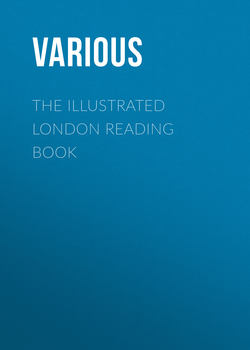Читать книгу The Illustrated London Reading Book - Various - Страница 45
THE BUSHMEN
ОглавлениеThe Bosjesmans, or Bushmen, appear to be the remains of Hottentot hordes, who have been driven, by the gradual encroachments of the European colonists, to seek for refuge among the inaccessible rocks and sterile desert of the interior of Africa. Most of the hordes known in the colony by the name of Bushmen are now entirely destitute of flocks or herds, and subsist partly by the chase, partly on the wild roots of the wilderness, and in times of scarcity on reptiles, grasshoppers, and the larvae of ants, or by plundering their hereditary foes and oppressors, the frontier Boers. In seasons when every green herb is devoured by swarms of locusts, and when the wild game in consequence desert the pastures of the wilderness, the Bushman finds a resource in the very calamity which would overwhelm an agricultural or civilized community. He lives by devouring the devourers; he subsists for weeks and months on locusts alone, and also preserves a stock of this food dried, as we do herrings or pilchards, for future consumption.
The Bushman retains the ancient arms of the Hottentot race, namely, a javelin or assagai, similar to that of the Caffres, and a bow and arrows. The latter, which are his principal weapons both for war and the chase, are small in size and formed of slight materials; but, owing to the deadly poison with which the arrows are imbued, and the dexterity with which they are launched, they are missiles truly formidable. One of these arrows, formed merely of a piece of slender reed tipped with bone or iron, is sufficient to destroy the most powerful animal. But, although the colonists very much dread the effects of the Bushman's arrow, they know how to elude its range; and it is after all but a very unequal match for the fire-lock, as the persecuted natives by sad experience have found. The arrows are usually kept in a quiver, formed of the hollow stalk of a species of aloe, and slung over the shoulder; but a few, for immediate use, are often stuck in a band round the head.
A group of Bosjesmans, comprising two men, two women, and a child, were recently brought to this country and exhibited at the Egyptian Hall, in Piccadilly. The women wore mantles and conical caps of hide, and gold ornaments in their ears. The men also wore a sort of skin cloak, which hung down to their knees, over a close tunic: the legs and feet were bare in both. Their sheep-skin mantles, sewed together with threads of sinew, and rendered soft and pliable by friction, sufficed for a garment by day and a blanket by night. These Bosjesmans exhibited a variety of the customs of their native country. Their whoops were sometimes so loud as to be startling, and they occasionally seemed to consider the attention of the spectators as an affront.
